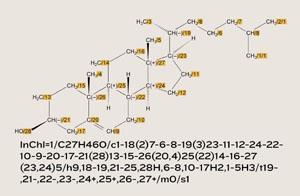The International Union of Pure and Applied Chemistry (Iupac) has released the first version of its long-awaited International Chemical Identifier
The International Union of Pure and Applied Chemistry (Iupac) has released the first version of its long-awaited International Chemical Identifier.
The identifier, InChI, offers a digital equivalent of the Iupac name, said Alan McNaught, president of the Iupac division of chemical nomenclature and structure representation. A standard format for chemical structure files had been discussed extensively for a decade but was held back by technical and political hurdles, said McNaught. The rise of the internet and input from Iupac finally prevailed.

InChI was developed for Iupac by Dmitrii Tchekhovskoi, Steve Stein and Steve Heller at the US National Institute of Standards and Technology (NIST). Chemical structures are expressed in terms of five layers of information - connectivity, tautomeric, isotopic, stereochemical and electronic. The unique connectivity layer is essential, said McNaught, but the user can choose which other layers to keep.
The InChI algorithm converts input structural information into the identifier in a three-step process: normalisation (to remove redundant information), canonicalisation (to generate a unique set of atom labels), and serialisation (to give a string of characters). The procedure generates a different identifier for every compound but always gives the same identifier for a particular compound regardless of how the structure is input. ’The procedure is equally applicable to both known and as yet unknown compounds,’ said McNaught.
Possible future applications of InChI include: ordering chemicals from suppliers; finding compounds in the literature via text-based search engines like Google; or passing the identity of a substance to a colleague for use in these or other applications.
’We will all reap the benefits of a generally accepted computer convention for uniquely representing and communicating the identity of any chemical substance,’ concluded McNaught.
Bea Perks






No comments yet